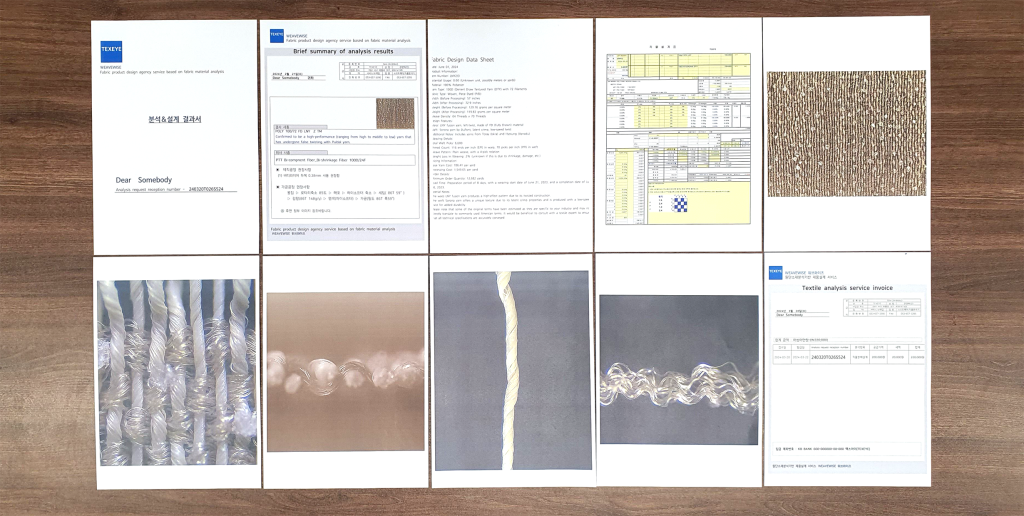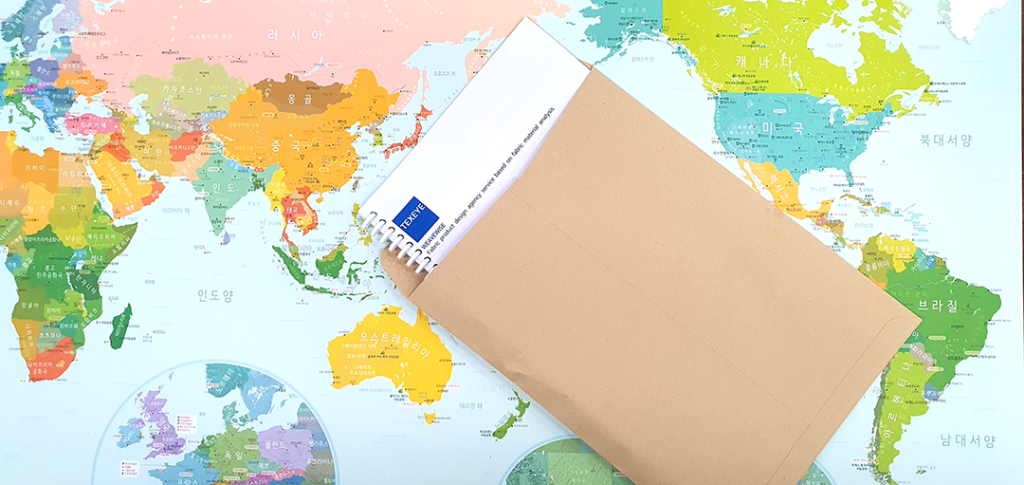Introducing TEXEYE’s Premier Fabric Analysis Service
WeaveWorth
Introducing TEXEYE’s Premier Fabric Analysis Service
At TEXEYE, we specialize in providing comprehensive fabric analysis services that cater to the needs of fashion brands and manufacturers. Our state-of-the-art laboratory is equipped with advanced numerical measurement machines and microscopes, allowing us to conduct thorough physical and chemical analyses of fabric samples. Whether you’re a fashion brand’s merchandiser receiving fabric samples by mail or an inquisitive customer eager to understand the basic composition of a fabric requested by a buyer, TEXEYE is here to assist.
How Our Service Works:
- Initiating the Analysis: When curiosity about a fabric’s composition arises, simply contact TEXEYE. Our dedicated representatives are ready to either visit your company to collect samples directly or receive them via mail.
- The Analysis Process: Upon receiving the fabric samples, our experts meticulously analyze them, leveraging our extensive experience in developing and producing over 20,000 fabrics over the past three decades. Our analysis covers a wide range of factors, from thread type to fabric structure, using the latest technology to ensure accurate and reliable results.
- Delivering Insights: The findings from our analysis are compiled into a detailed report booklet, which includes comprehensive data on the fabric’s specifications. We also calculate the average unit price of the yarn material and the production price of the final fabric. This valuable information is then shared with our clients in both printed form and as a PDF file, for a nominal fee.
What Sets Us Apart:
TEXEYE’s fabric analysis service is designed to bridge the gap between customers and final buyers by minimizing confusion regarding fabric unit prices. Our in-depth reports not only provide a detailed overview of the fabric’s characteristics but also offer insights into cost implications, making it an invaluable tool for decision-making.
Embrace the advantage of informed fabric selection and pricing with TEXEYE’s fabric analysis service, your partner in achieving clarity and confidence in your fabric-related endeavors.
A Detailed Example of Textile Fabric Material Analysis!
Step 1
Step 1: Curiosity Sparks Inquiry I’ve stumbled upon a fabric sample and am eager to understand its material composition and production
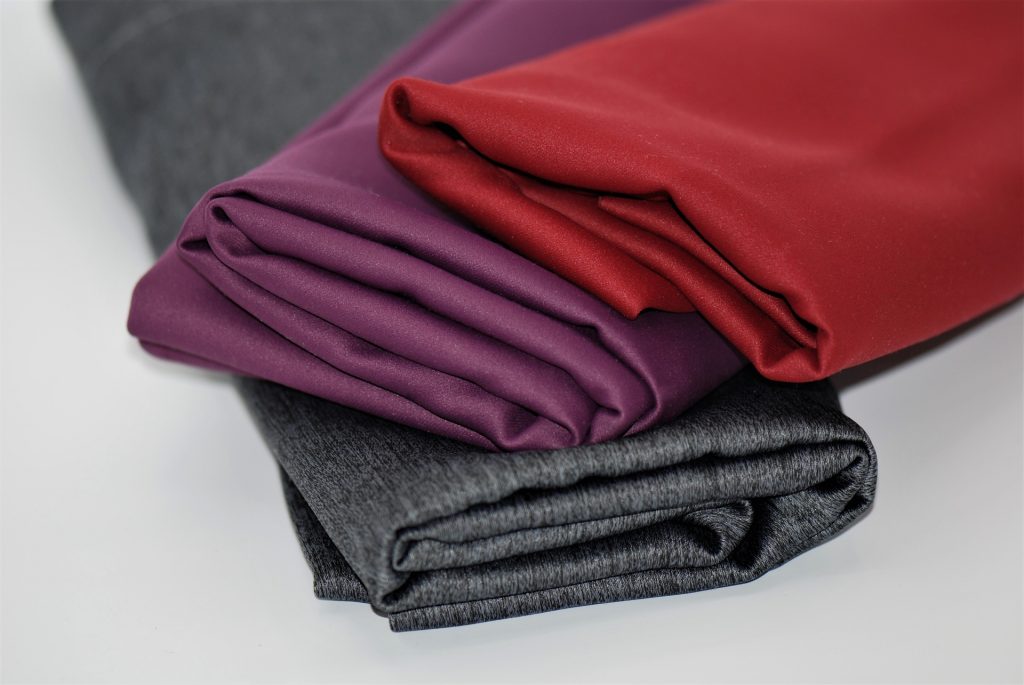



cost. It’s time to dive deep and uncover the secrets behind this fabric!
Step 2
Step 2: In-depth Surface Analysis The journey begins with a comprehensive examination of the fabric’s surface, focusing on its visual and tactile characteristics. I explore the uniqueness of its weight and density and identify the fabric’s structure—be it plain weave, twill, or double weave. I meticulously measure the fineness of the yarns in both the warp and weft directions, along with the number of twists. Additionally, the fabric undergoes a thorough assessment of its physical and chemical properties to gain a complete understanding of its makeup.








Step 3
Step 3: Crafting the Production Process Data Armed with detailed observations and insights, I next design a data sheet that outlines the entire production process of the finished fabric product. This includes everything from the yarn preparation process, warping, weaving preparation, dyeing, heat treatment, to the final post-processing steps. This comprehensive data sheet serves as a blueprint for transforming raw materials into the final fabric.
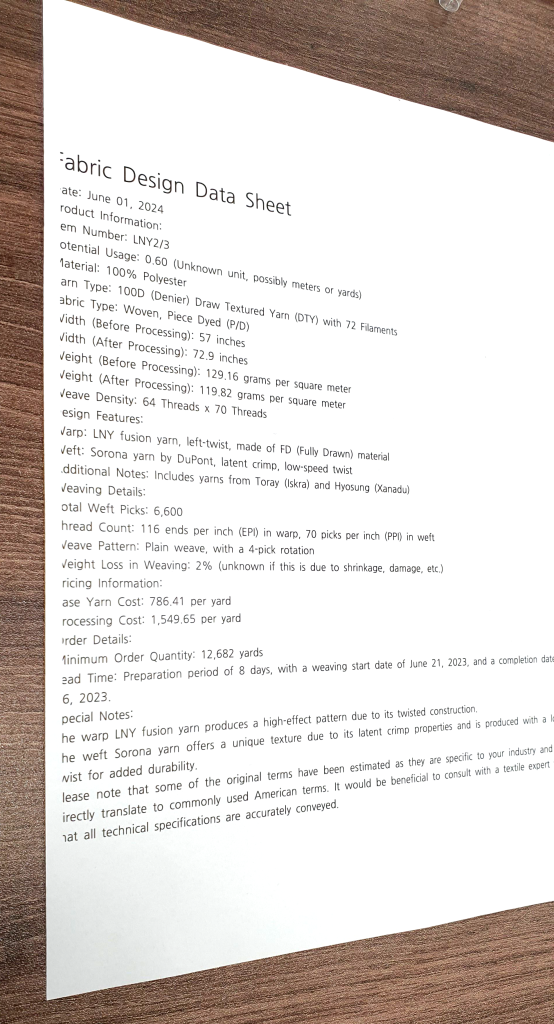
Step 4
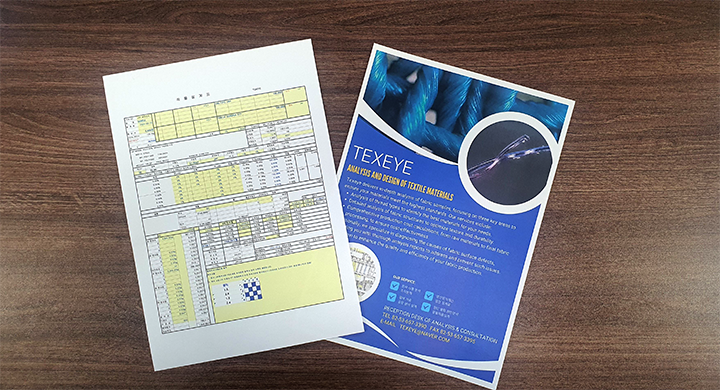
Step 4: Calculating Production Costs and Finalizing the Report Using the textile fabric production simulation data, I calculate the costs associated with each stage of the production process. This allows me to derive an appropriate standard supply price that benefits both the end consumer and the producer. The final step involves compiling these findings into a detailed report format, printed on A4 paper, and delivering it to the individual or company that requested the fabric sample analysis.
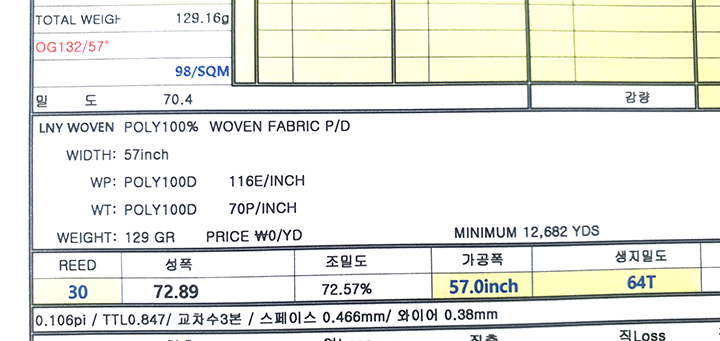
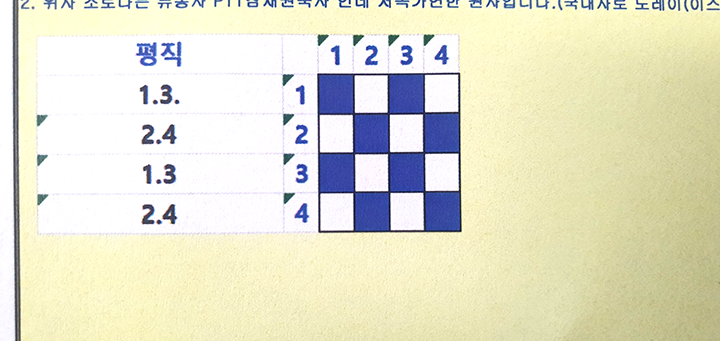
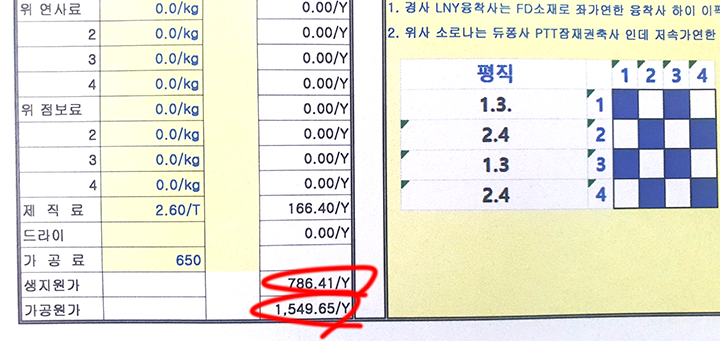
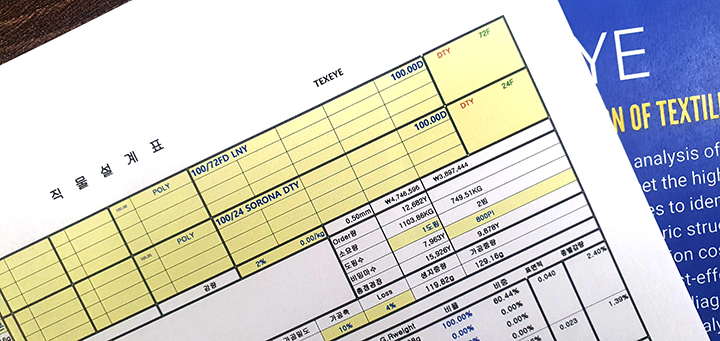
This detailed approach ensures a thorough understanding of the fabric’s composition and production costs, providing valuable insights for both creators and consumers in the textile industry.


